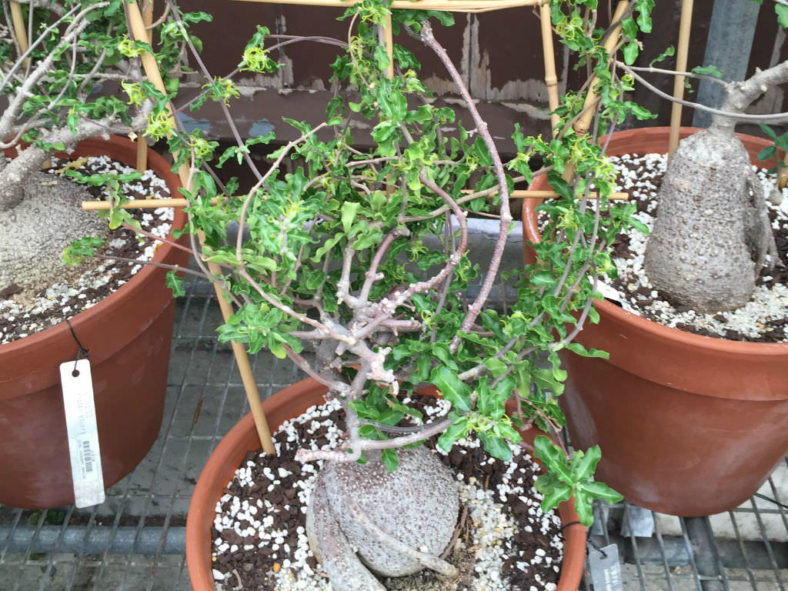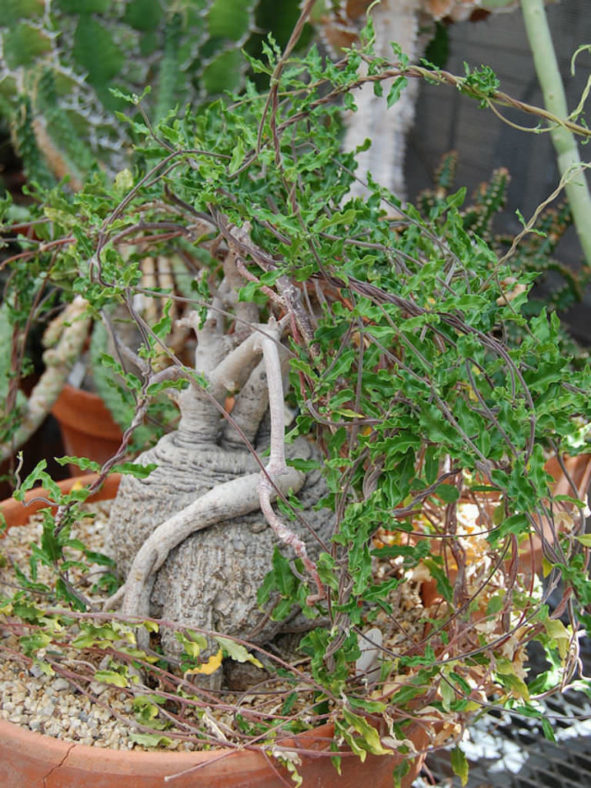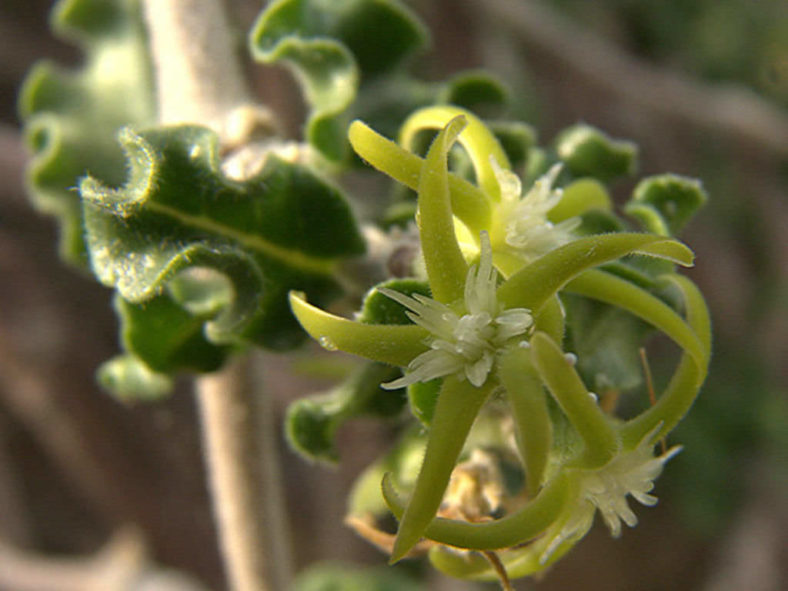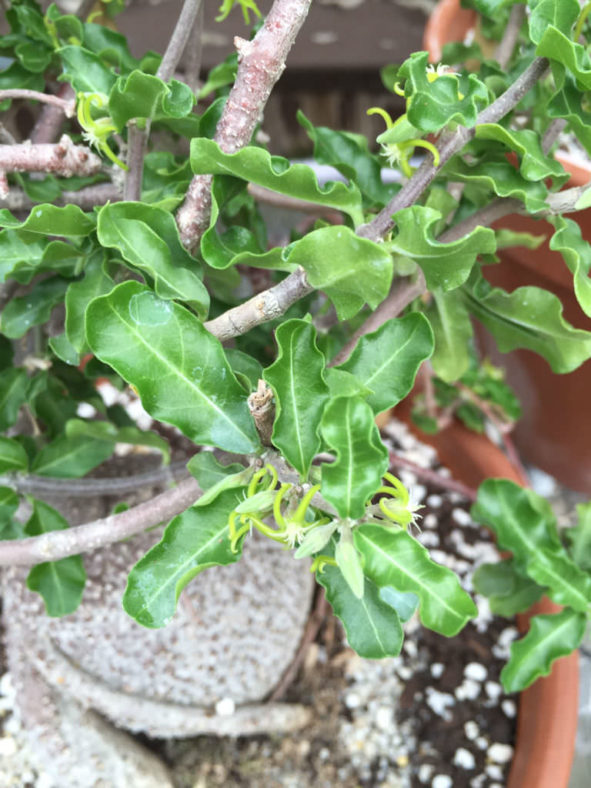Scientific Name
Fockea capensis Endl.
Synonym(s)
Brachystelma crispum, Cynanchum crispum, Fockea crispa, Fockea edulis var. capensis
Scientific Classification
Family: Apocynaceae
Subfamily: Asclepiadoideae
Tribe: Fockeeae
Genus: Fockea
Etymology
The specific epithet "capensis" (pronounced "ka-PEN-sis") means "of, belonging to, or from the Cape Province, South Africa, previously known as Cape Colony or Cape of Good Hope" and refers to the origin of this species.
Origin
Fockea capensis is native to South Africa (Western Cape).
Description
Fockea capensis, also known as Fockea crispa, is a caudiciform succulent with erect or climbing stems growing from a large, gray, warty tuber. The caudex is usually hidden underground and can reach a diameter of 2 feet (60 cm). The stems climb up on any available support and can grow up to 3.3 feet (1 m) long. The upper stems are thin, grey or brown, and hairy, while the lower ones are short, thick, much-branched, gray, and hairless. The leaves are grey-green, oval, measuring up to 0.8 inches (2 cm) long and 0.4 inches (1 cm) wide. They are slightly folded lengthwise and often with wavy margins.
The flowers usually appear in summer and can reach a diameter of 0.6 inches (1.5 cm). They are star-shaped with five long, twisted, yellow-green outer lobes and tiny, white inner ones. This species is dioecious, which means it has male and female flowers on separate specimens.

How to Grow and Care for Fockea capensis
Light: These plants prefer partial shade. They can tolerate full sun but need a little sun protection during the hottest part of the day.
Soil: A fast-draining soil mix is the best soil for your Fockea to drain excess water.
Hardiness: Fockea capensis can withstand temperatures as low as 25 to 50 °F (-3.9 to 10 °C), USDA hardiness zones 9b to 11b.
Watering: During the growing season, from spring to fall, water regularly and allow the soil to dry between waterings. Reduce watering in the winter. Water the plant only enough to prevent the tuber from shriveling.
Fertilizing: Feed with high-nitrogen fertilizer with a lower potassium level only during the growing season to force tuber growth.
Propagation: Fockea plants are relatively easy to grow from seeds. They are dioecious, so both male and female plants are needed to produce seeds. Vegetative propagation is difficult or impossible.
Learn more at How to Grow and Care for Fockea.
Toxicity of Fockea capensis
Fockeas are known as food plants, but the tuber has milky sap, which is said to be poisonous. Avoid contact with skin or eyes, and keep away from children and pets.
Links
- Back to genus Fockea
- Succupedia: Browse succulents by Scientific Name, Common Name, Genus, Family, USDA Hardiness Zone, Origin, or cacti by Genus
Photo Gallery
Click on a photo to see a larger version.


